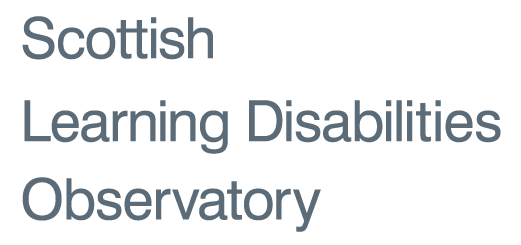Scotland: Households
Scotland's population size is 5,295,403
-
Choose
- Learning disabilities
- Autism
In the past, people with learning disabilities experienced significant periods of segregation, with large numbers living in long-stay institutions. By the 1960s, over 7,000 people with learning disabilities lived in long stay hospitals. In 2000, the Scottish Government introduced policy - The same as you? - presenting a blueprint for service redesign and most notably the closure of long stay hospitals. This successfully drove forward change, and in 2016 the overwhelming majority of people with learning disabilities live in private households, with health and social care support being provided either at home or in the community - on the Census day only 346 were in hospital.
Scotland's new learning disabilities strategy, The keys to life, was introduced in 2015. One of the four priorities of its implementation framework for 2015-2017 is independence; with people with learning disabilities being able to live independently in the community, with equal access to all aspects of society. Given the historical context, and current strong focus on independence, it remains important to check trends in housing and accommodation.
Types of private accommodation
| All People | People with learning disabilities | |||
|---|---|---|---|---|
| Total | % | Total | % | |
| living in a home that is owned outright | 1,253,193 | 24.1% | 3,825 | 16.6% |
| living in a home that has a mortgage or loan or shared ownership | 2,153,767 | 41.4% | 5,102 | 22.2% |
| Socially rented accommodation from council/local authority | 608,152 | 11.7% | 5,209 | 22.6% |
| Socially rented other | 507,393 | 9.8% | 6,677 | 29.0% |
| Privately rented accommodation | 673,881 | 13.0% | 2,203 | 9.6% |
| Total | 5,196,386 | 100.0% | 23,016 | 100.0% |
Households
Type of accommodation for people aged 16 and over
Type of accommodation for all people
| All People | People with learning disabilities | |||
|---|---|---|---|---|
| Total | % | Total | % | |
| Private households | 4,283,213 | 97.8% | 17,856 | 84.6% |
| Communal establishments | 95,859 | 2.2% | 3,259 | 15.4% |
| Total | 4,379,072 | 100.0% | 21,115 | 100.0% |
Did you know
346
people with learning disabilities aged 16+ were in hospitals on the Census day
Type of accommodation for all people by age group and gender
Deprivation levels (Scottish Index of Multiple Deprivation; SIMD)
| All People | People with Learning Disabilities | |||
|---|---|---|---|---|
| Total | % | Total | % | |
| Most deprived area | 1,019,452 | 19.4% | 7,417 | 28.1% |
| Deprived area | 1,030,680 | 19.6% | 6,348 | 24.1% |
| Average area | 1,070,026 | 20.3% | 5,217 | 19.8% |
| Affluent area | 1,089,632 | 20.7% | 4,186 | 15.9% |
| Most affluent area | 1,059,264 | 20.1% | 3,181 | 12.1% |
| Total | 5,269,054 | 100.0% | 26,349 | 100.0% |
Scottish Index of Multiple Deprivation (SIMD) for all people by age group and gender
Urban/Rural Classification
| All People | People with Learning Disabilities | |||
|---|---|---|---|---|
| Total | % | Total | % | |
| Urban area | 3,666,430 | 69.6% | 18,985 | 72.1% |
| Small town | 659,577 | 12.5% | 3,353 | 12.7% |
| Rural area | 943,047 | 17.9% | 4,011 | 15.2% |
| Total | 5,269,054 | 100.0% | 26,349 | 100.0% |
Urban/ Rural classification for all people by age group and gender
Summary information
51.6% of people with learning disabilities in private accommodation live in socially rented households, compared with 21.5% of all people
-
Of adults aged 16 and over, 15.4% with learning disabilities live in communal establishments, compared with 2.2% of all adults
-
Of adults aged 16 and over in communal establishments, 346 (1.6%) people with learning disabilities were in hospital compared with 3665 (0.1%) of all adults
View other information
Explore
Choose People with learning disabilities data or People with Autism data
You may also choose topic or area
